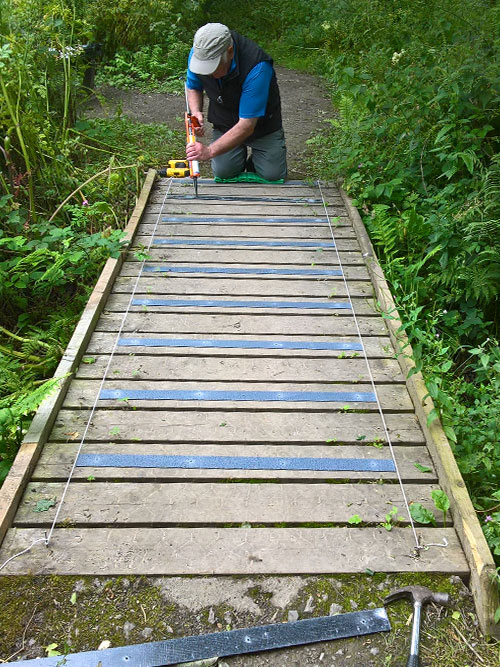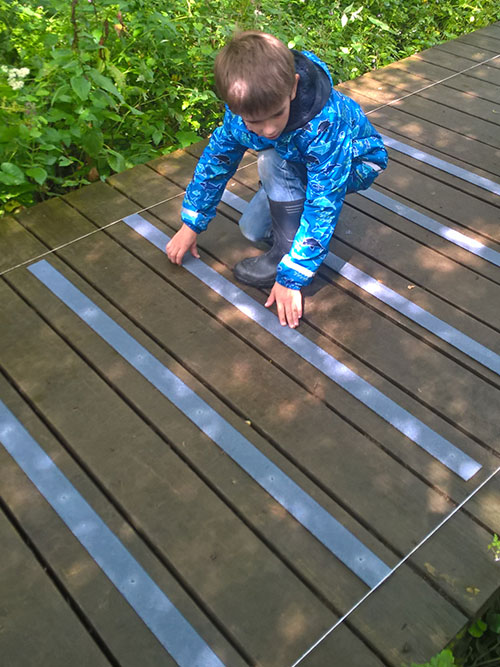Safety Improvements for Harrington Nature Reserve Wooden Footbridges
Harrington Reservoir Local Nature Reserve is one of two Local Nature Reserves (LNRs) in the Workington area, which means it is an area of land protected for its contribution towards wildlife, geology, education and public enjoyment.
The reserve has direct links with Harrington's industrial heritage as the reservoir was actually constructed in 1863 to supply water for nearby iron works. The final shipment of pig iron left the iron works in 1928 on a cargo ship Girasol on its way towards Swansea. Between the 1880s and 1930s 'The Rezzer' was used as a boating lake before being left to nature.


The wildlife of Harrington Reservoir
The reservoir itself forms a relatively small part of the reserve, most of which is defined by the narrow wooded valley of Ellerbeck, running for some 700m upstream of the reservoir. The reserve encompasses a man-made reservoir fed by the Ellerbeck, extensive willow scrub, two herb-rich meadows and riverine woodland. The mosaic of habitats, some of them increasingly rare and found in few other places throughout West Cumbria, are linked together by a network of paths, steps and bridges with seating and viewpoints located at strategic resting points throughout the reserve. The site is very popular with wildlife and the local community.
The present and future of Harrington Reservoir
The Workington Nature Partnership was established, as a joint venture, between Workington Town Council and Allerdale Borough Council, employing 1 project officer to improve and support the natural environment. In turn, the officer works alongside a dedicated, hard working and passionate team of volunteers, from a wealth of diverse backgrounds. The volunteers of the ‘Friends of Harrington Nature Reserve’ group meet once a week at the reserve, to identify and prioritise practical conservation tasks as well as ongoing maintenance and improvements.


The focus during June and July, was to source a suitable product, to replace the chicken wire product previously used as anti-slip material for 4 wooden footbridges throughout the reserve. Although the wire was reasonably successful, some areas were prone to vandalism, causing the wire to be loosened, causing hazards to visitors and the local community.
Non-slip decking strips were the most suitable product for the nature reserve
Safe Tread's product information and case studies, showed that the Non-Slip Decking Strips were the most suitable product for the nature reserve. Fondly referred to as 'mole grips' in the office, (so the moles don't slip off the bridges), the volunteers have spent more than 3 days, over several weeks, preparing the wooden treads on the bridges, as well as installing the non-slip strips. As an additional measure, they also used Sikaflex adhesive to secure the strips.


More about Non Slip Decking Strips.
Project supported by the ‘Friends of Harrington Nature Reserve’ group.
More about the Workington Nature Partnership on Facebook




 Non-Slip
Non-Slip Anti-Slip
Anti-Slip Non-Slip
Non-Slip Anti-Slip
Anti-Slip Anti-Slip Extra Deep
Anti-Slip Extra Deep Stair Riser
Stair Riser  Anti-Slip
Anti-Slip Anti-Slip
Anti-Slip Anti-Slip
Anti-Slip Sand Ladders,
Sand Ladders, Adhesives &
Adhesives & Nationwide
Nationwide 








